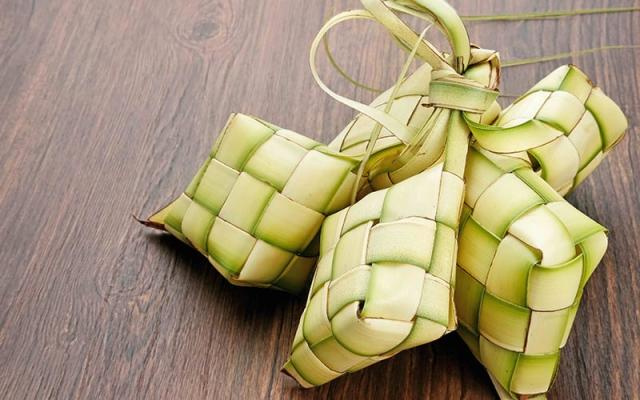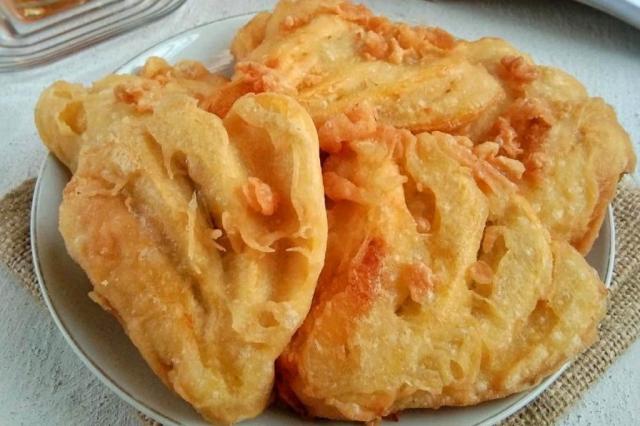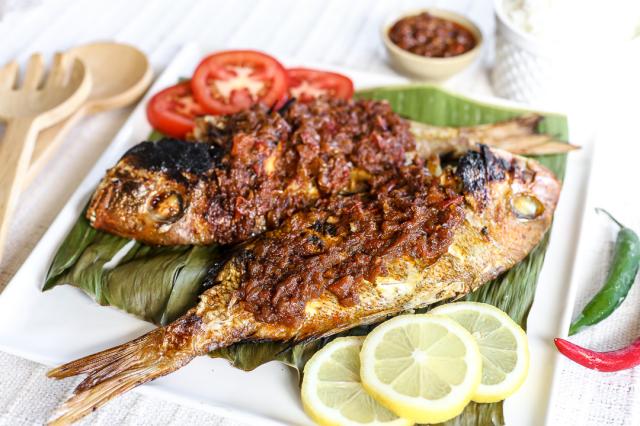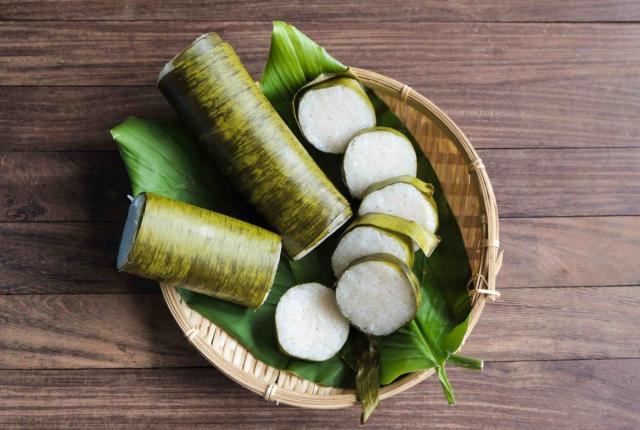Ketupat is a traditional Southeast Asian dish, often found in Indonesia and Malaysia, where glutinous or regular rice is encased in a woven palm leaf pouch and then boiled. These rice cakes are a staple during festive occasions such as Eid ul-Fitr, the celebration marking the end of Ramadan, symbolizing forgiveness, and a fresh start. Ketupat carries with it not just the aroma of cooked rice but the essence of communal harmony and gratitude. The diamond-shaped packets are a symbol of the intricacy and artistry that goes into preparing traditional foods, with the palm leaves lending a subtle fragrance that infuses the rice within.

Ingredients
- 2 cups of glutinous rice or regular rice, rinsed and soaked for 4 hours or overnight
- Fresh palm leaves for wrapping (or pre-woven ketupat cases available at Asian markets)
- Salt to taste
- Water for boiling
Cooking Steps
- Drain the soaked rice and mix it with salt.
- Fold the palm leaves into a pouch or pocket shape. There are many tutorials available online on how to weave the palm leaves into the correct form if you are using fresh palm leaves.
- Fill the pouch with rice, filling it halfway to allow the rice to expand during cooking.
- Secure the open end of the pouch by weaving the leaves or using a piece of string to tie it shut.
- Boil the ketupat in a large pot of water for about 4 hours for glutinous rice, or 1-2 hours for regular rice until the grains are fully cooked and have expanded to fill the pouches.
- Once cooked, remove the ketupat from the pot and hang them to dry or place them in a colander to drain any excess water.
- Allow the ketupat to cool completely before unwrapping and serving with your favorite dishes, such as rendang or satay.
Ketupat is more than just a meal; it’s a culinary experience that brings people together to celebrate and feast. This dish is not only rich in carbohydrates, providing energy for the festivities, but it’s also a low-fat and gluten-free option suitable for a variety of diets. When it comes to preparing ketupat, the key is in the freshness and quality of the rice and the palm leaves. Select high-grade rice that will not become too mushy when boiled, and if using fresh palm leaves, make sure they are clean and pliable for weaving. The process of making ketupat, from the weaving of the leaves to the cooking of the rice, is a labor of love, reflecting the care and dedication that is central to traditional celebrations. Ketupat is a reminder of the beauty of cultural heritage and the importance of preserving time-honored culinary practices.



